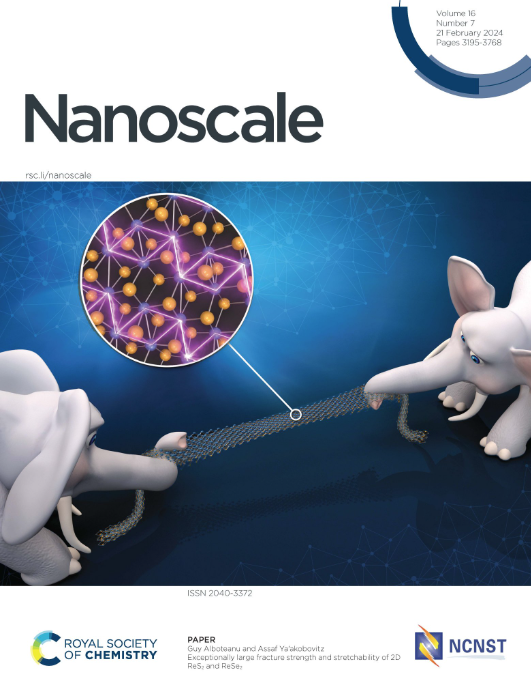High-entropy alloy nanoparticles functionalized with reduced graphene oxide as a high-performance cathode for lithium–oxygen batteries
IF 5.8
3区 材料科学
Q1 CHEMISTRY, MULTIDISCIPLINARY
引用次数: 0
Abstract
One of the cruxes of developing high-performance lithium–oxygen batteries (LOBs) is the rational design and controllable synthesis of a promising cathode catalyst. High-entropy alloys (HEAs) have been considered as prospective catalytic materials for LOBs due to their adjustable composition and excellent catalytic performance. Herein, ∼50 nm PtFeCoNiCu HEA NPs with uniformly distributed elements embedded on few-layer reduced graphene oxide (PtFeCoNiCu@rGO) were successfully synthesized via a high-temperature annealing route. The LOBs with the PtFeCoNiCu@rGO cathode exhibited a high initial discharge capacity of 13 949 mA h g−1, a low overpotential of 0.77 V, and remarkable cycling stability over 148 cycles with a limited capacity of 500 mA h g−1 at 100 mA g−1. The dominant discharge product was Li2O2, and no by-products were detected. These excellent electrochemical performances arose from the combined effects of reduced graphene oxide (rGO) and HEA NPs. Reduced graphene oxide, with a large specific surface area and omnipresent pores with diverse size distribution, provided sufficient storage space for Li2O2 and facilitated transport channels for Li+ and O2, while the highly conductive HEA NPs, with optimized catalytic efficiency, further accelerated the kinetics of ORR/OER. This work presents a feasible alternative HEA-based catalyst design strategy for applicable LOBs.

用还原氧化石墨烯功能化的高熵合金纳米颗粒作为锂氧电池的高性能阴极
开发高性能锂氧电池的关键之一是合理设计和可控合成极具发展前景的阴极催化剂。高熵合金(High-entropy alloys, HEAs)因其可调节的成分和优异的催化性能而被认为是极具发展前景的催化材料。在此,通过高温退火方法成功合成了具有均匀分布元素嵌入在少层还原氧化石墨烯(PtFeCoNiCu@rGO)上的~ 50 nm PtFeCoNiCu HEA NPs。以PtFeCoNiCu@rGO为阴极的lob具有13 949 mA h g−1的高初始放电容量,0.77 V的低过电位,在100 mA g−1时的极限容量为500 mA h g−1,在148次循环中具有出色的循环稳定性。主要排放产物为Li2O2,未检出副产物。这些优异的电化学性能源于还原氧化石墨烯(rGO)和HEA NPs的共同作用。还原后的氧化石墨烯具有较大的比表面积和无所不在的不同尺寸分布的孔隙,为Li2O2提供了充足的存储空间,并为Li+和O2的运输通道提供了便利,而高导电性的HEA NPs具有优化的催化效率,进一步加速了ORR/OER动力学。本研究提出了一种可行的基于hea的催化剂设计策略。
本文章由计算机程序翻译,如有差异,请以英文原文为准。
求助全文
约1分钟内获得全文
求助全文
来源期刊

Nanoscale
CHEMISTRY, MULTIDISCIPLINARY-NANOSCIENCE & NANOTECHNOLOGY
CiteScore
12.10
自引率
3.00%
发文量
1628
审稿时长
1.6 months
期刊介绍:
Nanoscale is a high-impact international journal, publishing high-quality research across nanoscience and nanotechnology. Nanoscale publishes a full mix of research articles on experimental and theoretical work, including reviews, communications, and full papers.Highly interdisciplinary, this journal appeals to scientists, researchers and professionals interested in nanoscience and nanotechnology, quantum materials and quantum technology, including the areas of physics, chemistry, biology, medicine, materials, energy/environment, information technology, detection science, healthcare and drug discovery, and electronics.
 求助内容:
求助内容: 应助结果提醒方式:
应助结果提醒方式:


